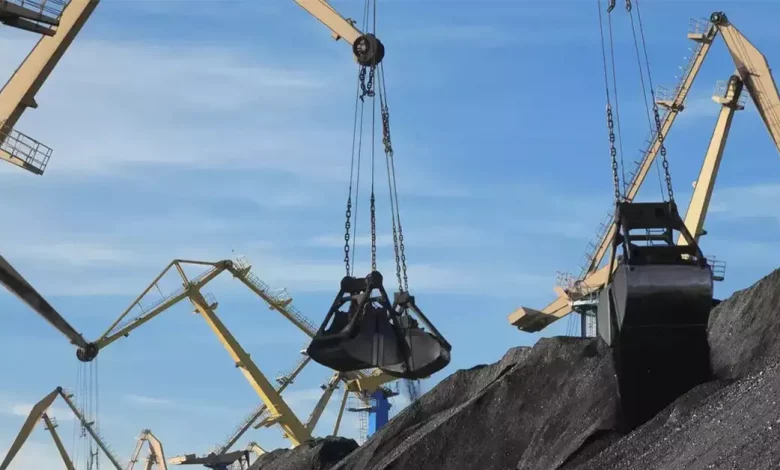Daily Current Affairs for UPSC
India Needs to Increase Coal-fired Capacity in 2024
Syllabus- Infrastructure (GS Paper-3)

Context- The Union Power Ministry stated that India needs to increase its coal-fired capacity in 2024 by the most in at least 6 years.
Thermal Power Plants
- Coal is the primary source of power in India. Today, greater than 50% of total electricity generation capacity is coal based, and more than 70% of energy generation comes from coal based thermal power plants.
- India is the second one-biggest coal importer in spite of having the world’s fourth-biggest reserves, and coal powers almost three-fourths of the country’s electricity demand.
- Coal currently accounts for over 50% of India’s installed capacity of 428.3 GW.
- As of May 31, 2023, the full set up potential of thermal power plants in India became 417,668 MW, and it is predicted to attain 260 GW by 2030.
- India has the fifth maximum installed thermal electricity power globally.
- Power generation in 2023 increased by 11.3%, the quickest within the last five years.
- Coal manufacturing in India Gondwana coals (about 98% of overall coal in India is based on Gondwana time): These coal are majorly located in Chhattisgarh, Jharkhand, Odisha, Madhya Pradesh, Andhra Pradesh and so forth. Examples: Damodar, Son, Mahanadi Valleys.
- Tertiary coals (final approximately 0.2% of total coal reserves to this category): These are mainly found in the states of Assam, Tamil Nadu, Rajasthan. Examples: Mokom (Upper Brahmaputra, Assam), Neyveli and Mannargudi (Tamil Nadu) famous for Lignite, Palana (Bikaner, Rajasthan).Anthracite coal in India: Kalakot, Nichahom in Jammu and Kashmir place of India.
Importance of Coal Based Power Plants
- Energy Production: Coal-fired thermal power plants (TPPs) generated 74.3% of India’s electricity at some point of FY 2022-2023.
- The technology by TPPs keeps developing to satisfy the growing demand.
- Energy Security: Electricity security is carried out handiest by having a reliable and strong supply of energy which can always suit the call for a reduced cost.
- Infrastructure and Employment: The coal sector is crucial for infrastructure improvement and industries like electricity, metallic, cement, and aluminium, employing tens of millions of human beings.
- Sustainable Development: While the argument for switching to renewable power is compelling, the reality is that the arena is exceedingly dependent on fossil fuels, which produce 80% of the overall energy supplied.
- In 2022, oil, coal, and gas accounted for 30%, 27%, and 23% of the world’s general power, whilst solar and wind power resources together contributed only 2.4%.
What are the challenges?
- Coal Shortage: More than 100 thermal power plants in India have coal stocks below 25%.
- The biggest reason for this shortage is the growing power demand.
- High cost of gasoline: coal extraction from state-run Coal India has been hindered by delays in environmental clearances, land acquisition issues, and inadequate investment in advanced technologies.
- Coal Quality: Coal deposits in India normally incorporate high ranges of ash (35-50%) as compared to the ones mined in other major coal-mining nations, like Australia, China, and the U.S.
- Burning coal with more ash ends in the erosion and eventual failure of boiler tubes and different additives, affecting the plant’s availability, performance, and performance.
- Increasing Power Demand: In 2021, demand increased to 124.2 Billion Units in keeping with month from 106.6 Billion Units in keeping with month in 2019.
- In 2022, the demand has further increased to 132 Billion Units.
- Weather Conditions: Heavy rains in coal mining regions like Gujarat, Punjab, Rajasthan, Delhi, and Tamil Nadu have ended in lesser coal production.
- Inadequate Stock Build-up: Prior to the monsoon season, there was inadequate coal stock build-up in most thermal plant life, pushing them below essential levels.
- Reduction in Power Generation from Imported Coal: There changed into a 43.6% reduction in power generation from imported coal, which brought about greater demand of 17.4 MT of domestic coal, in addition depleting coal reserves.
- Rise in Global Demand: There has been a sharp increase within the price of imported coal thanks to a rise in global demand.
- Dependency on Imported Coals: Power businesses often should depend on high priced coal imports notwithstanding having plentiful coal reserves.
- Aged Power Plants: Many power plants in India are old and inefficient leading to inefficiencies.
Related Government Initiatives
- The Ministry of Coal administers three Central Sector Schemes: Exploration of Coal and Lignite, Research & Development, and Conservation, Safety and Infrastructural Development in Coal Mines.
- Coal Gasification: The government has set a target to gasify a hundred Million Tonnes (MT) of coal with the aid of FY 2030.
- The Union Cabinet currently authorised a ₹8,500 crore incentive scheme for coal gasification projects.
- The government has eliminated the monopoly in coal mining and is bringing commercial mining based totally on a revenue-sharing mechanism.
- ‘Mission Coking Coal’ has been released to provide you with a roadmap that could recommend ways to enhance the manufacturing and utilisation of domestic coking coal in India via 2030.
Way Forward
- Against the backdrop of numerous challenges, there’s a need to increase the efficiency of its thermal energy plants to reduce emissions whilst ramping up nuclear electricity and improving pumped storage to integrate more solar and wind energy into the grid.
Source: DTE





.png)



